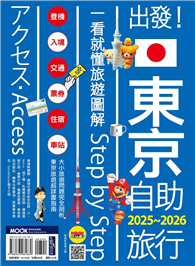1. Introduction.- 2. Do capital inflows relieve banks’ credit constraints and boost credit growth? Evidence from credit conditions and bank credit risk.- 3. Credit conditions and the amplification of macroeconomic responses to unexpected shocks: Implications for monetary policy.- 4. Output and inflation responses to single and double credit threshold effects in South Africa.- 5. Do contractionary fiscal shocks transmitted via GDP growth dampen credit growth?.- 6. Do synchronised credit and house price booms impact the monetary policy reaction to inflationary pressures?.- 7. Do synchronised boom and non-boom episodes in credit, commodity and equity prices impact the response of the repo rate to positive inflation shocks?.- 8. To what extent do capital inflows impact response of South African economic growth to positive SA-US interest rate differential shocks?.- 9. Is there a compelling case to increase the SARB holdings of government securities to supplement interest income and neutralize loses due foreign investments and foreign currency reserves accumulation?.- 10. Are the amplification effects of positive shocks to SARB assets and forex reserves on long-term yields dependent on government debt regimes?.- 11. Foreign Currency Reserves: Do they contribute to GDP and employment growth?.- 12. What is the impact of large-scale asset purchases and banks’ balance sheets?.- 13. Is the interest rate corridor an effective instrument to dampen the accumulation of excess reserves and inter-bank rate volatility?.- 14. Is the impact of the unexpected positive required reserves ratio shock on inflation expectations different to that due to positive excess LAH and forex reserves shock?.- 15. How potent is the required reserves impact tightening shock on funding and consumer interest rates?.- 16. The impact of large-scale asset purchases on non-resident purchases of South African assets.- 17. Large scale asset purchases and activity in the primary and secondary share and bond markets.- 18. The stock and flow effects of large-scale asset purchases: Evidence from persistent vs transitory shocks.- 19. Has the inflation target band impacted the natural rate of unemployment in South Africa? Evidence from the accelerationist Philips curve.- 20. Do regulatory tools impact the transmission of capital inflow shocks into credit extension and induce the reallocation of sectoral credit shares?.- 21. What role do non-performing loans play in propagating the excess LAH shock effects on sectoral credit re-allocation?.- 22. Is excess CAR beneficial in neutralising excessive credit growth and inflationary pressures? What are the implications for monetary and financial policy?.- 23. Do non-performing loans propagate the transmission of monetary policy tightening shocks to sectorial credit?.- 24. How effective is the relaxation of the countercyclical capital buffer at a time when other residential macro-prudential tools are tight?.- 25. Revisiting the role of money demand function: Does the short fall in money demand impact the inflation responses of rand depreciation shocks?.- 26. Do the shortfalls and overhangs derived from money demand in South Africa augmented with portfolio balances impact inflation dynamics?.- 27. Do the exchange rate depreciation and volatility shocks impact money demand in South Africa?.- 28. Does economic policy uncertainty impact real money demand in South Africa?.- 29. Is a single sectorial credit growth threshold too restrictive? Evidence from the output and inflation.- 30. Does the threshold for household debt growth matter for GDP growth and response of monetary policy to inflation shocks?.- 31. How does a positive repo rate shock affect the household sector intermediation? Evidence from households’ flow-of-funds data.- 32. To what extent are the public and private’s sector financial asset flows impacted by monetary policy tightening shock?.
| FindBook |
有 1 項符合
Achieving Price, Financial and Macro-Economic Stability in South Africa: The Role of the Central Bank Balance Sheet, Macro-Prudential Tools, Financial的圖書 |
 |
Achieving Price, Financial and Macro-Economic Stability in South Africa: The Role of the Central Bank Balance Sheet, Macro-Prudential Tools, Financial 作者:Gumata 出版社:Palgrave MacMillan 出版日期:2022-05-29 語言:英文 規格:平裝 / 602頁 / 21.01 x 14.81 x 3.1 cm / 普通級/ 初版 |
| 圖書館借閱 |
| 國家圖書館 | 全國圖書書目資訊網 | 國立公共資訊圖書館 | 電子書服務平台 | MetaCat 跨館整合查詢 |
| 臺北市立圖書館 | 新北市立圖書館 | 基隆市公共圖書館 | 桃園市立圖書館 | 新竹縣公共圖書館 |
| 苗栗縣立圖書館 | 臺中市立圖書館 | 彰化縣公共圖書館 | 南投縣文化局 | 雲林縣公共圖書館 |
| 嘉義縣圖書館 | 臺南市立圖書館 | 高雄市立圖書館 | 屏東縣公共圖書館 | 宜蘭縣公共圖書館 |
| 花蓮縣文化局 | 臺東縣文化處 |
|
|
圖書介紹 - 資料來源:博客來 評分:
圖書名稱:Achieving Price, Financial and Macro-Economic Stability in South Africa: The Role of the Central Bank Balance Sheet, Macro-Prudential Tools, Financial
內容簡介
作者簡介
Nombulelo Gumata is an economist at the South African Reserve Bank and has authored several books in the areas of international finance and macroeconomics, macro-prudential and regulatory tools and financial stability, labour markets, monetary and fiscal policy.
Eliphas Ndou is an economist at the South African Reserve Bank and has authored books in international finance, public finances, monetary, labour, macro and microeconomics, time-series econometrics, banking regulation and macro-prudential policy.
|











